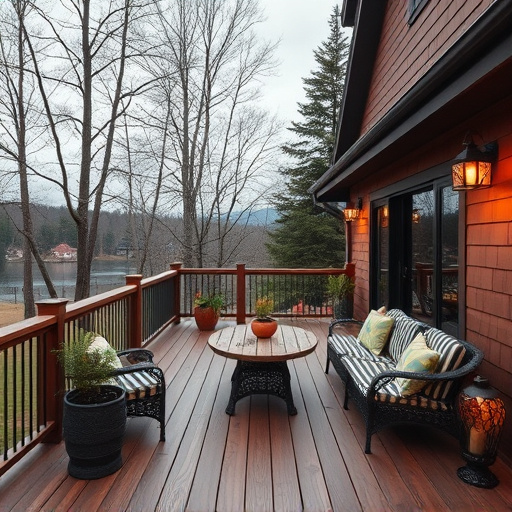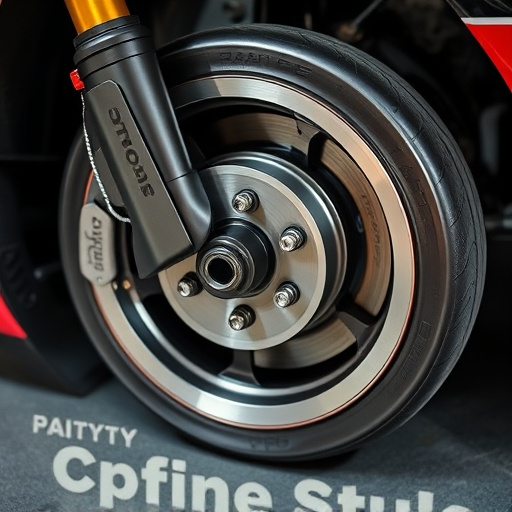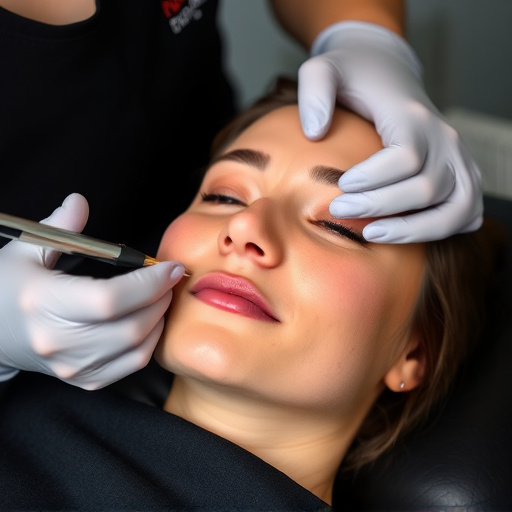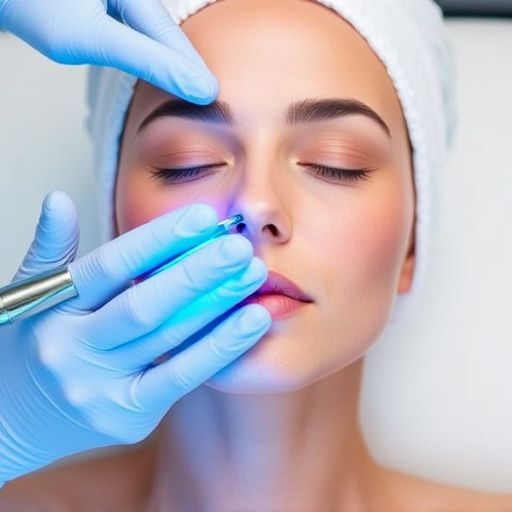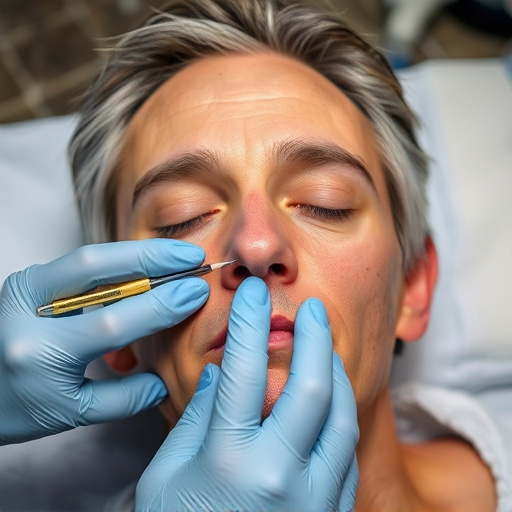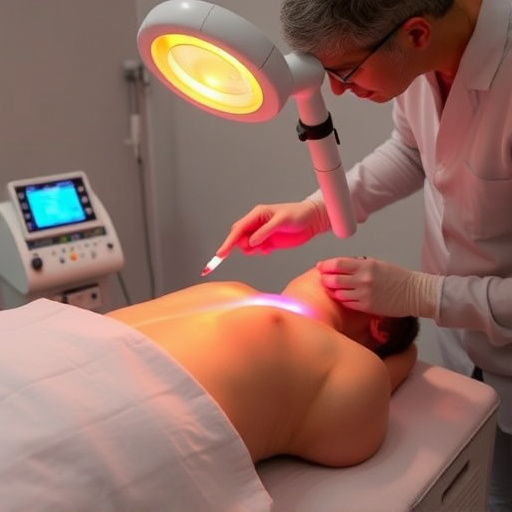Cystic acne, characterized by deep, painful cysts, differs from regular acne due to blocked hair follicles allowing bacteria breeding and scarring. While OTC treatments like benzoyl peroxide, salicylic acid, or glycolic acid can help with mild cases, severe cystic acne requires specialized facial treatments at medical spas, such as pore refinement procedures, to address root causes and minimize scarring. Customized facials, combined with a thoughtful skincare routine featuring suitable OTC products, offer a comprehensive approach to managing cystic acne for clearer skin.
“Uncovering Effective Over-the-Counter Cystic Acne Solutions: A Comprehensive Guide. Cystic acne, a persistent and painful skin condition, affects many. This article delves into understanding this complex issue, focusing on its causes and impact on daily life. We explore the realm of over-the-counter (OTC) treatments, evaluating their potential effectiveness. From benzoyl peroxide to salicylic acid, we dissect the pros, cons, and considerations for OTC cystic acne treatments, offering insights to help navigate this challenging condition.”
- Understanding Cystic Acne: Causes and Impact
- Exploring Over-the-Counter Treatment Options
- Effectiveness and Considerations for OTC Cystic Acne Treatments
Understanding Cystic Acne: Causes and Impact
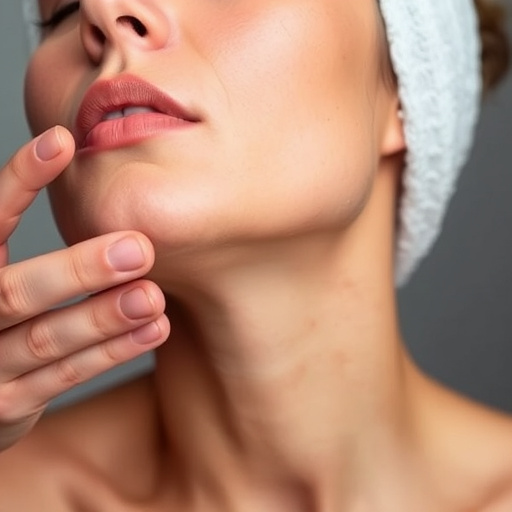
Cystic acne is a severe form of acne that goes beyond the typical whiteheads and blackheads. It’s characterized by deep-seated bumps filled with pus, often appearing as large, painful cysts on the face, but it can also affect other parts of the body. Unlike regular acne, cystic acne forms when hair follicles become blocked, leading to a buildup of oil (sebum) and dead skin cells. This blockage creates a pocket beneath the skin’s surface where bacteria can breed, causing inflammation and the formation of cysts. The impact is significant, often resulting in scarring and disfigurement if left untreated. Those affected may experience emotional distress due to the visible nature of the condition, which can affect self-esteem and confidence.
While over-the-counter (OTC) treatments offer a convenient solution for mild acne, they might not be as effective against cystic acne. This is because OTC medications typically target surface-level breakouts and do not penetrate deep enough to reach the root causes of cystic acne. To effectively manage and treat this condition, many turn to medical spa services that provide specialized facial treatments, such as pore refinement procedures, which aim to unclog follicles and reduce inflammation. These professional interventions are crucial in minimizing scarring and achieving clearer skin for those suffering from cystic acne.
Exploring Over-the-Counter Treatment Options

Over-the-counter (OTC) cystic acne treatments have gained popularity as a more accessible and often more affordable alternative to prescription medications. These products are designed to tackle the specific concerns of cystic acne, which involves deeper, inflammation-filled lesions that can leave significant scarring if left untreated. Many OTC options contain active ingredients like benzoyl peroxide, salicylic acid, or glycolic acid, known for their ability to exfoliate skin, unclog pores, and reduce bacterial growth.
When exploring these treatment choices, it’s crucial to consider your skin type and the severity of your cystic acne. Some OTC products may be suitable for gentle, less sensitive skin, while others might be formulated with more aggressive ingredients to target stubborn blemishes. Personalized skincare routines that incorporate tailored OTC treatments can complement professional aesthetic treatments like body contouring for a comprehensive approach to managing cystic acne and achieving clearer, healthier-looking skin.
Effectiveness and Considerations for OTC Cystic Acne Treatments

Over-the-counter (OTC) cystic acne treatments have gained popularity for their accessibility and potential effectiveness in managing this stubborn skin condition. While OTC products may not offer the same level of intensity as prescription medications, they can still be a valuable addition to a comprehensive skincare routine. The key to success lies in understanding your skin type and choosing products tailored to address cystic acne’s unique characteristics.
Considerations for OTC options include selecting products with ingredients proven to reduce inflammation and unclog pores. Benzoyl peroxide and salicylic acid are commonly recommended for their ability to exfoliate and combat bacteria, respectively. Additionally, customized facials and pore refinement treatments can provide targeted care, while chemical peels may offer deeper cleansing. However, it’s essential to be mindful of potential irritations and start with mild formulas, gradually increasing strength as tolerated to avoid drying out the skin.
While over-the-counter (OTC) cystic acne treatments can offer a convenient solution for mild to moderate cases, it’s crucial to understand their effectiveness is often variable. In terms of addressing the deep-seated inflammation characteristic of cystic acne, OTC options may not provide the same level of efficacy as prescription medications. However, they can be a good starting point for managing symptoms and preventing further breakouts. Remember that, in light of the above, consulting a dermatologist is advisable for personalized treatment plans, especially if your cystic acne is severe or persistent.
